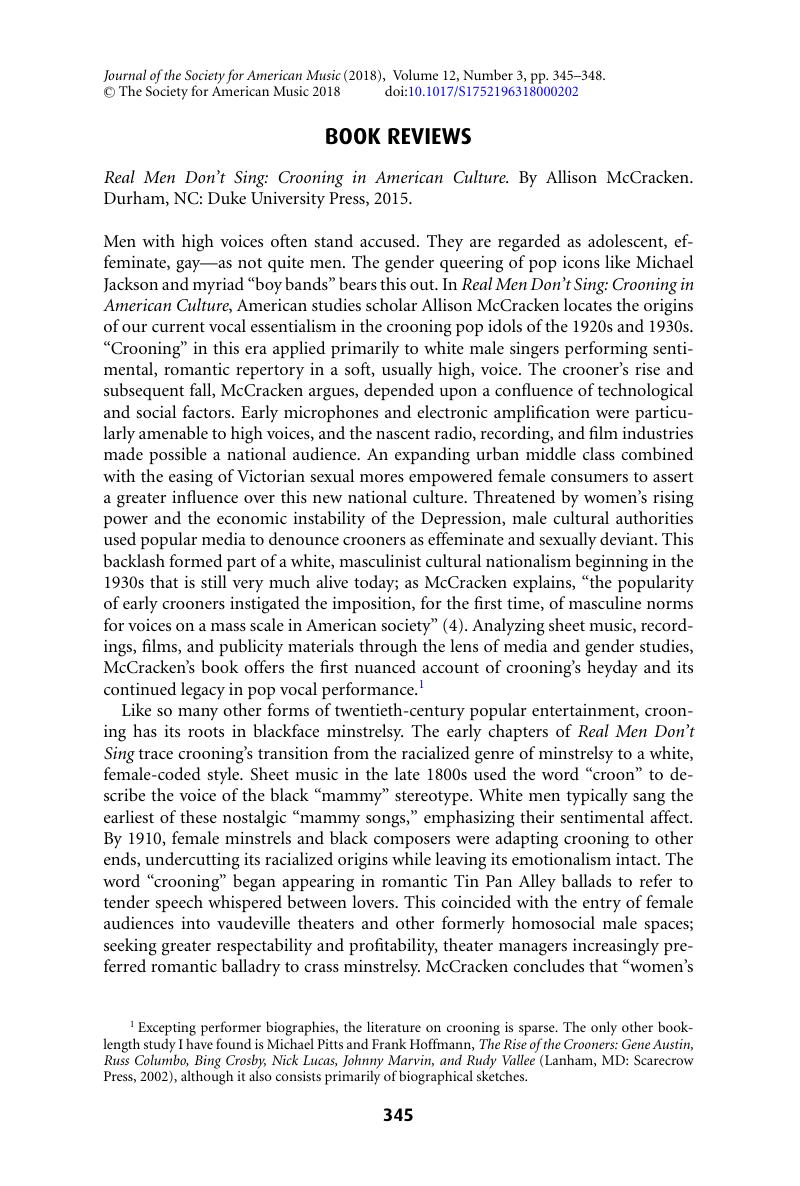No CrossRef data available.
Published online by Cambridge University Press: 10 July 2018

1 Excepting performer biographies, the literature on crooning is sparse. The only other book-length study I have found is Pitts, Michael and Hoffmann, Frank, The Rise of the Crooners: Gene Austin, Russ Columbo, Bing Crosby, Nick Lucas, Johnny Marvin, and Rudy Vallee (Lanham, MD: Scarecrow Press, 2002)Google Scholar, although it also consists primarily of biographical sketches.
2 This musicological scholarship includes Barkin, Elaine and Hamessley, Lydia, eds., Audible Traces: Gender, Identity, and Music (Los Angeles: Carciofoli Verlagshaus, 1999)Google Scholar; Brett, Philip, Wood, Elizabeth, and Thomas, Gary C., eds., Queering the Pitch: The New Gay and Lesbian Musicology (New York: Routledge, 1994)Google Scholar; Hubbs, Nadine, The Queer Composition of America's Sound: Gay Modernists, American Music, and National Identity (Berkeley: University of California Press, 2004)Google Scholar; McClary, Susan, Feminine Endings: Music, Gender, and Sexuality (Minneapolis: University of Minnesota Press, 1991)Google Scholar; Solie, Ruth A., ed., Musicology and Difference: Gender and Sexuality in Music Scholarship (Berkeley: University of California Press, 1993)Google Scholar; and Whiteley, Sheila and Rycenga, Jennifer, eds., Queering the Popular Pitch (New York: Routledge, 2006)Google Scholar.
3 This application of the term is different from Susan McClary's use, which refers to cadences that fall on the weak beats within a measure. McCracken acknowledges this distinction in an endnote (347 n58).